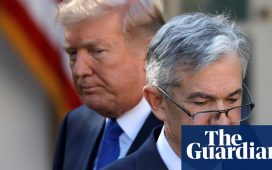
By Francesco Canepa
FRANKFURT (Reuters) – European Central Bank officials are sticking to plans to cut interest rates multiple times this year, even as higher U.S. inflation delays a pivot to looser policy by the U.S. Federal Reserve and tensions in the Middle East keep oil prices high.
Investors are rethinking what they expected to be a global easing cycle after stubbornly strong U.S. price growth slowed the Fed’s plan to start lowering borrowing costs, which had been seen as the starting gun for other central banks.
ECB President Christine Lagarde has strongly hinted that the euro zone’s central bank is still likely to begin reducing its deposit rate from a record-high 4% in June but has been careful to leave open its options for the path beyond.
Nearly all her colleagues from the currency bloc’s 20 national central banks have been more explicit, saying they expect further rate cuts to follow as inflation in the euro zone gradually declines to hit the ECB’s 2% target by next year.
All have stressed that the ECB’s decisions will be based on incoming data, especially about wages, profits and productivity.
“As long as economic developments are in line with our expectations it is reasonable to expect a few more rate cuts after June by the end of the year,” Madis Muller, Estonia’s central bank chief, told Reuters last week.
Even Klaas Knot, the hawkish governor of the Dutch central bank, has said he is “not uncomortable” with three cuts in 2024.
Lithuania’s Gediminas Simkus said more than three moves were possible, and Germany’s Joachim Nagel spoke of a “cautious gliding flight”.
remove ads
.
The latest developments in the Middle East and United States were generally seen as a reason for greater caution but did not fundamentally change the picture in the euro zone, French central bank governor Francois Villeroy de Galhau argued.
Inflation in the euro zone has been falling in all categories apart from services.
“I think all the boxes have been ticked for them to start cutting in June and then I have a cut every quarter with a risk of a further one in October,” Frederik Ducrozet, head of macroeconomic research at Pictet Wealth Management, said.
DOUBTS
Some investors have nevertheless begun to doubt the ECB’s resolve, with money markets no longer fully pricing in three cuts by December.
Traders wager the ECB would ultimately be forced to follow the Fed, if nothing else to stem the euro’s weakness.
“The FX-inflation channel is what gives us cause for concern in Europe versus the more aggressive (rate-cutting) path we had previously,” economists at Morgan Stanley (NYSE:) said in a note.
Policymakers, however, were generally comfortable with the single currency’s behaviour.
“Forex markets have been very calm so far,” Croatian governor Boris Vujcic said at an event in Washington last week.
And his Italian colleague Fabio Panetta emphasised that the easing effect of a weaker euro is typically offset by higher bond yields and commodity prices, resulting in a net tightening of financing conditions.
Nearly all governors stressed how the euro zone’s economy was much weaker than that of the U.S., requiring a different approach.
remove ads
.
“The U.S. and euro zone economies have decoupled,” Belgian central bank chief and ECB rate-setter Pierre Wunsch told Reuters. “The gap between the Fed’s and the ECB’s policy rates is not new and may widen.”
Some went further.
France’s Villeroy, an influential voice on the Governing Council, estimated that the ECB would continue to exercise restriction on the economy for as long as its deposit rate remained above 2.5% or even 2%.
He was echoed by Portugal’s Mario Centeno, who also stressed the ECB was in no rush to get to that level.
“I don’t know anybody who says the neutral rate is above 3%,” Centeno told Reuters. “How fast should we get there? We’ve got time.”
One lingering area of concern was that services inflation continued to show strong momentum in the euro zone, which has been boosted by wage rises.
“In an alternative scenario, productivity growth would remain depressed over the projection horizon and demand for less interest-rate sensitive services could remain sufficiently strong,” ECB board member Isabel Schnabel told an event.









